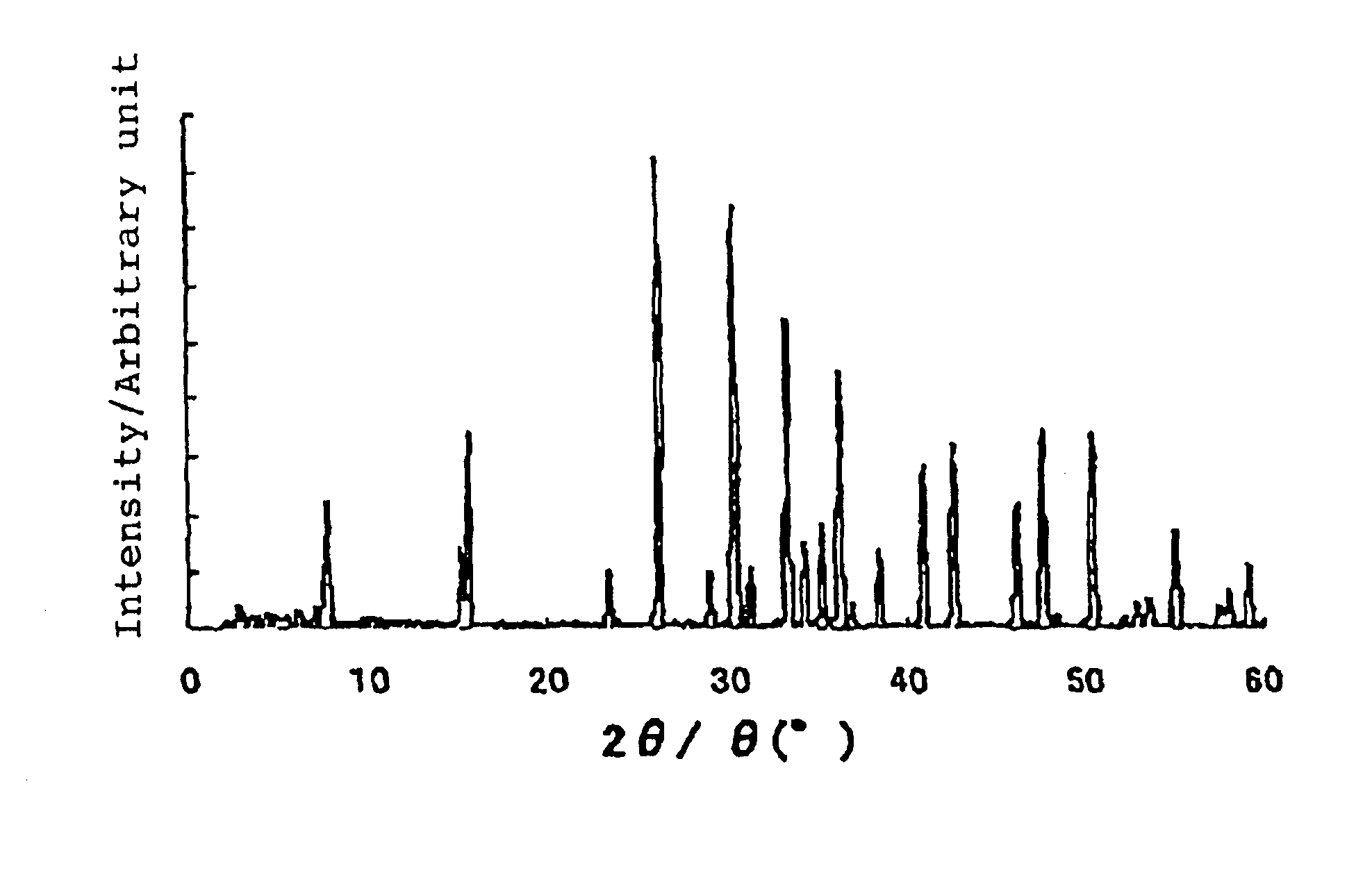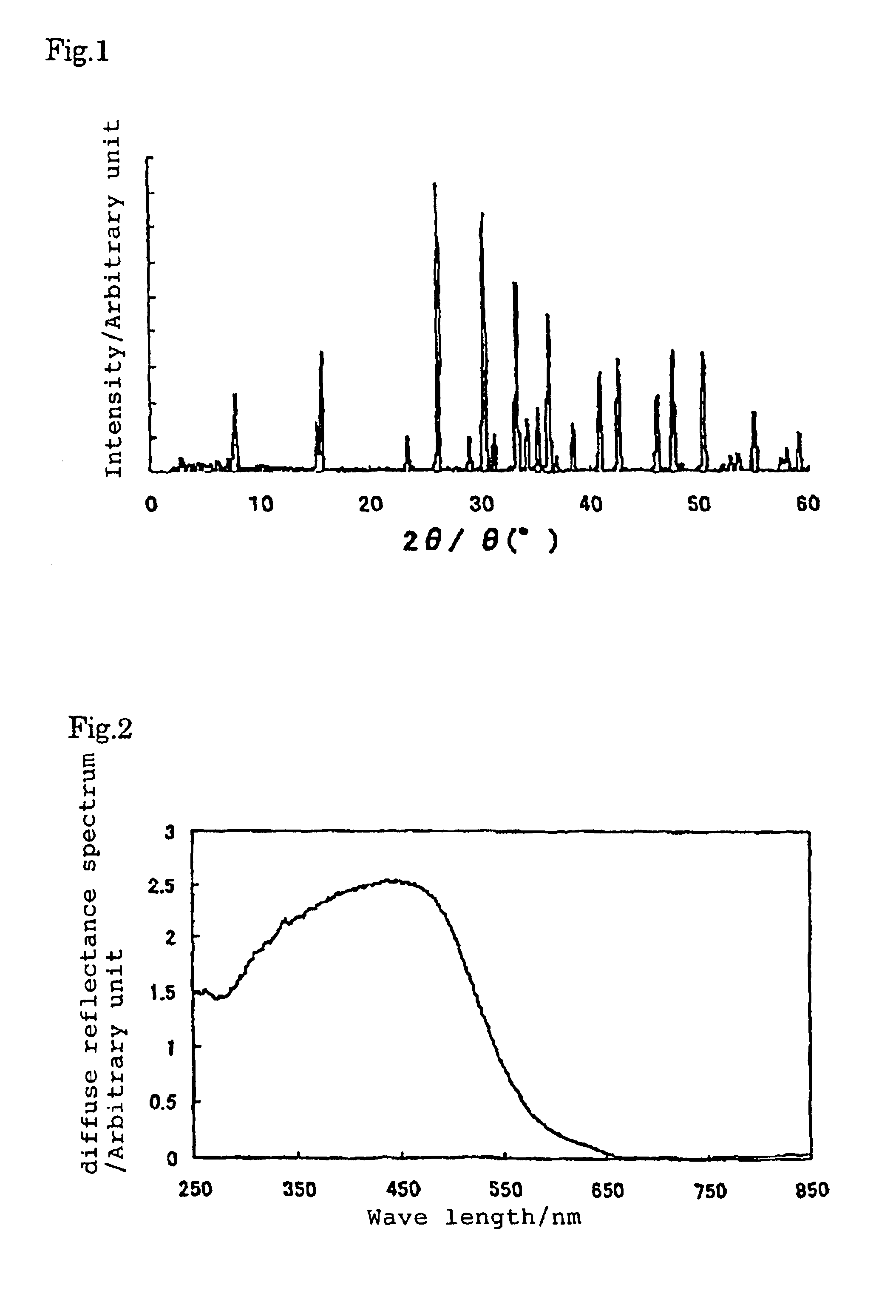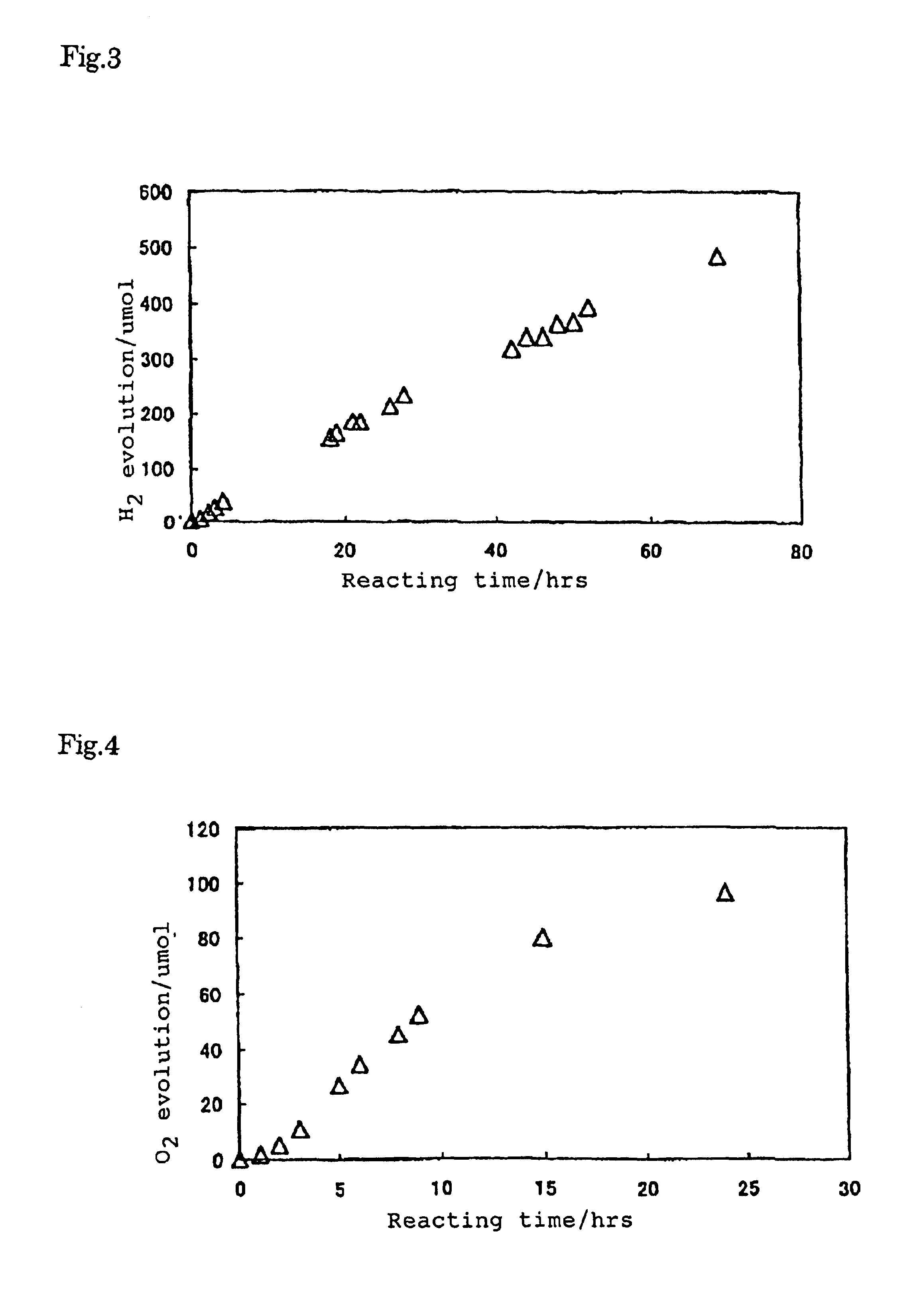Oxysulfide photocatalyst for decomposition of water by visible light
a photocatalyst and oxysulfide technology, applied in the field of photocatalysts, can solve the problems of difficult to excite water by low, almost all conventional solid photocatalysts which can generate electrons or holes by visible light radiation, and no technique to meet the above requirements
- Summary
- Abstract
- Description
- Claims
- Application Information
AI Technical Summary
Benefits of technology
Problems solved by technology
Method used
Image
Examples
example 1
To produce 5 g of Sm2Ti2O5S2, samarium sulfide (Sm2S3), titanium oxide (TiO2) and titanium sulfide (TiS2) are mixed together with by 1:1:1 ratio and contained into a quartz tube. After vacuum sealing the quartz tube, the calcinating process is carried out by following condition. The temperature is elevated from the room temperature to 400° C. by 15° C. / 1 hr elevating speed and maintain the temperature of 400° C. for 24 hours. After that, the temperature is elevated to 1000° C. by 20° C. / 1 hr elevating speed and maintain said temperature for 7 days. Then the temperature is cooled down to the room temperature by 30° C. / 1 hr cooling speed, and the aimed product is obtained.
Loading of Pt Promoter
The corresponding amount of tetraamminedichloroplatinum Pt(NH3)4Cl2 to 1 wt % of the catalyst is impregnated onto the catalyst in aqueous solution and dried on a water bath, then reduced by hydrogen at 573 K for 2 hours.
The X-ray diffraction pattern after calcination is shown in FIG. 1. All diff...
PUM
| Property | Measurement | Unit |
|---|---|---|
| band gap energy | aaaaa | aaaaa |
| band gap energy | aaaaa | aaaaa |
| band gap energy | aaaaa | aaaaa |
Abstract
Description
Claims
Application Information
 Login to View More
Login to View More - R&D
- Intellectual Property
- Life Sciences
- Materials
- Tech Scout
- Unparalleled Data Quality
- Higher Quality Content
- 60% Fewer Hallucinations
Browse by: Latest US Patents, China's latest patents, Technical Efficacy Thesaurus, Application Domain, Technology Topic, Popular Technical Reports.
© 2025 PatSnap. All rights reserved.Legal|Privacy policy|Modern Slavery Act Transparency Statement|Sitemap|About US| Contact US: help@patsnap.com



